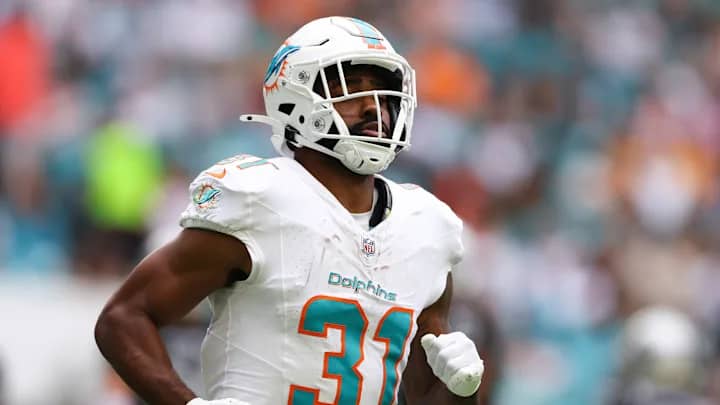The Miami Dolphins enjoyed a surprisingly successful 2022 season, finishing with a 9-8 record and a playoff berth. However, the postseason ended swiftly, highlighting the significant gap between their regular season performance and genuine Super Bowl contention. General Manager Chris Grier and head coach Mike McDaniel now face a pivotal offseason, one where crucial decisions regarding personnel, strategy, and roster construction will determine whether the Dolphins remain a playoff hopeful or evolve into legitimate Super Bowl contenders.
The most pressing issue revolves around quarterback Tua Tagovailoa. His undeniable talent, evident in flashes of brilliance throughout the season, is tempered by concerning injury history. Two concussions in 2022 raised serious questions about his long-term durability and ability to withstand the rigors of a full NFL season, let alone a grueling playoff run. While his arm talent is undeniable, and his quick release and accuracy are coveted assets, the Dolphins must weigh the risk of investing heavily in a player whose health remains a major question mark. A long-term extension for Tagovailoa, a crucial decision looming, hinges on the team’s confidence in his ability to stay healthy and lead them to consistent success. Failing to secure a suitable extension could leave them scrambling for a quarterback in a potentially weak draft class. Alternatively, exploring trade options for a proven veteran quarterback, should they choose to move on from Tagovailoa, presents another challenging but potentially necessary path.
Beyond the quarterback position, the offensive line needs significant bolstering. While the unit showed improvements in parts of 2022, its inconsistency and inability to consistently protect Tagovailoa proved costly. The team needs to invest heavily in improving the offensive line through both free agency and the draft, focusing on securing players with the size, strength, and experience to create a reliable pocket for the quarterback and open running lanes. This will require careful scouting and a strategic approach, prioritizing players who fit the team’s offensive scheme and have the capacity to perform under pressure.
Defensively, the Dolphins need to address certain weaknesses. While the secondary showed flashes of brilliance at times, consistency remained an issue, particularly in pass coverage. The team needs to evaluate its current defensive backfield and potentially add impact players through the draft or free agency. The defensive line also needs to show more consistency in generating pressure on opposing quarterbacks. A lack of consistent pressure allowed opposing offenses to dictate the pace of the game, contributing to the team’s inconsistency. Addressing these defensive vulnerabilities through calculated additions will be crucial in improving the overall defensive performance.
Beyond personnel decisions, the Dolphins’ coaching staff must also refine their game plan. While McDaniel’s innovative offensive scheme showed promise, the team’s inability to adjust effectively in crucial games highlighted the need for further development. The coaching staff needs to develop contingency plans and adapt their approach based on the opponent and the flow of the game. This includes improved play-calling in critical situations and a more nuanced defensive strategy that can counter different offensive styles.
The financial aspect is also a key consideration. The Dolphins need to navigate the salary cap effectively, balancing the need to retain core players with the necessity of acquiring new talent. Strategic use of free agency, careful drafting, and contract negotiations will be essential in maintaining a competitive roster while adhering to the salary cap constraints.
In conclusion, the Miami Dolphins stand at a crucial juncture. Their aspirations of becoming serious Super Bowl contenders depend on a series of bold and well-calculated decisions in the upcoming offseason. Addressing the quarterback situation, fortifying the offensive and defensive lines, refining their game plan, and expertly navigating the financial landscape are all critical components of their quest. Failure to effectively address these areas could leave them stuck in a perpetual cycle of playoff hopes and early exits. Success, however, could propel them to the pinnacle of the NFL. The choices made this offseason will define the Dolphins’ trajectory for years to come.

